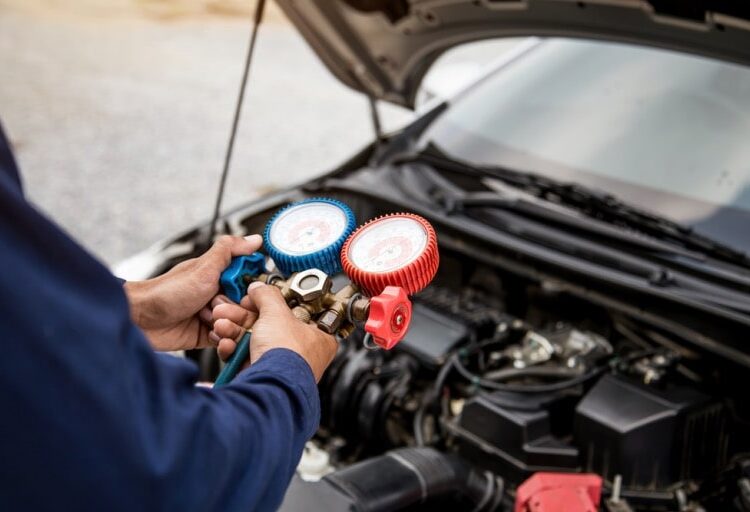We might be heading into autumn now, but this is the perfect time to look at re-gassing your car’s air conditioning system – especially if you’ve just come out of a summer of driving in a stuffy motor. Plus, we’ve seen some unseasonably mild autumns in recent years, so it’s worth being ready for a warm spell. But how often should we re-gas our air con? And why is it important?
What is Aircon Re-gassing?
Aircon re-gassing involves replacing the refrigerant that powers your car’s air conditioning system. Over time, the refrigerant naturally escapes through hoses and seals, causing a gradual loss of cooling efficiency. This refrigerant is vital for the system to generate cold air, so when levels drop, the system struggles to cool the cabin effectively.
Re-gassing is a critical part of maintaining the performance and efficiency of your air conditioning. Without enough refrigerant, not only will the system fail to cool, but it can also put undue strain on other components, like the compressor.
In the long run, not re-gassing could lead to more expensive repairs or, worse, a complete air conditioning failure. Keeping your system regularly topped up ensures you can drive in comfort, regardless of the outside temperature, while preserving the long-term health of the aircon unit.
How often Should You Re-gas?
For most vehicles, it’s recommended that the air conditioning system be re-gasped every one to two years. This guideline is often provided by manufacturers, though the exact timing can vary depending on several factors, such as the age of the car and how frequently you use the air conditioning. Some newer vehicles with more advanced aircon technology may not need re-gassing as frequently as older models.
Climate plays a significant role too. In hotter climates, where air conditioning is used heavily, the refrigerant is likely to deplete faster. Even in the UK, where aircon usage can fluctuate based on the season, it’s wise to check the system every couple of years. Additionally, driving conditions, such as stop-start city driving, can accelerate wear and tear on the air conditioning system, making more frequent servicing a good idea.
Checking your vehicle’s manual will provide specific advice, but booking an aircon service every couple of years is generally a good rule of thumb to ensure optimal performance.
Signs You Need to Re-gas Your Car’s Air Con
Even if you haven’t reached the one to two-year mark, there are signs that your air conditioning system may need a re-gas sooner.
- Reduced cooling efficiency: If your air conditioning no longer blows cold air, it’s a sign that refrigerant levels are low.
- Unusual smells: Musty or damp smells from the vents could indicate that the air conditioning system is struggling and needs attention.
- Hissing or gurgling sounds: These noises can point to a leak in the system, which is allowing refrigerant to escape.
If you notice any of these signs, it’s worth having your aircon checked by a professional mechanic as soon as possible.
Maintaining Your Car’s Air Conditioning
Keeping your car’s air conditioning system in good condition requires more than just regular re-gassing; it’s also essential to have the system serviced periodically, even if you haven’t noticed any problems. One key element of aircon maintenance is checking for leaks. Leaks can significantly reduce the system’s efficiency and can lead to refrigerant loss, meaning you’ll need to re-gas more frequently.
Ensuring your system is free of leaks can prolong the intervals between re-gassing. In addition, aircon re-gas and lubrication is a crucial part of the process. Lubricating the system helps protect the compressor and other internal components from wear and tear. Without proper lubrication, the compressor could seize, resulting in expensive repairs.
A well-lubricated system not only ensures efficient cooling but also reduces the risk of long-term damage. Ultimately, taking a proactive approach to aircon maintenance will ensure that your system lasts longer, performs better, and avoids costly issues down the road.




